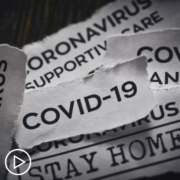Experts Share Best Practices for Telemedicine in MPN Care
Experts Share Best Practices for Telemedicine in MPN Care from Patient Empowerment Network on Vimeo.
What are some best practices for MPN care with telemedicine? Watch as expert Dr. Jeanne Palmer explains how telemedicine care can be adjusted for optimal care and hopes for the future of telemedicine and monitoring technologies.
See More from MPN TelemEDucation
Related Resources:

|

|

|
Transcript:
Lisa Hatfield:
So I think we’re going to talk just a little bit, we’re going to move on to talking about best practices for MPN patients and families using telemedicine. Dr. Palmer, we’ll just start with you and then talk to Dr. Sirintrapun about that. But what are the best practices for MPN patients utilizing telemedicine? And what are some of the newer technologies that we’ve even talked about today that are being explored that you’re most excited about?
Dr. Palmer:
Well, again, I think it’s hard to say the right way to use telemedicine. I think that, as much as automation and trying to come up with processes that are very standard is important, I think it is still a learning process. How long is it safe to do telemedicine? How many, if I’m the only provider seeing this person and there’s not somebody physically looking at them, am I doing a disadvantage? So like, what’s the safety realm in that? I mean, that is something that I know comes up and it comes up with a lot of physicians, like, “Well, I have to examine the patient, I have to eyeball the patient.” So trying to figure out that balance of making sure you’re providing good quality and safe care, but that you’re also allowing for people to have access to things they otherwise wouldn’t have access to.
And some of that is a matter of having good collaborations with providers in different places and the willingness of the local providers to work with one of us. And some of that’s just kind of saying, “Well, I’m going to try this.” And then after a while if you say, “Hey, this isn’t working well,” then you switch it. But I think a lot of this is something that you can’t prescribe. It is something that needs to be the level of comfort for the provider, the level of comfort for the local provider and the patient. And it’s not going to be the same for any two patients. There certainly is going to be some variability. I’m very excited about the ongoing telemedicine and our ability to utilize it. I’m really hoping that even after the public health emergency, some of the barriers to being able to provide telemedicine outside of your own state will not be a problem. And I think each institution’s handling it a little bit differently.
So that’s something I’m excited for and there’s probably going to be a lot more that I can’t even begin to think about that’s going to come up in terms of ways that people can, like there’s handheld imaging machines and stuff like that. Is there going to be a way that we can actually have patients apply it? So, for example, I like to feel spleens in patients who have myeloproliferative diseases because they’re often enlarged. Is there going to be a way that there’s some type of equipment or some type of material that can do a spleen exam without me actually having to physically see the patient and lay hands on them? This is something that I probably, people are thinking about who are a lot smarter than me. And I’m looking forward to something like that being developed. But that’s what I’m hopeful is that we get to the point where I can feel like I’m providing really top quality care to people who could be anywhere in the United States or even honestly the world.






